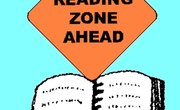Slow learners, or at-risk students, are not the learning disabled and do not have mental disorders; they are simply students in a typical class who take a longer time to grasp any subject material. Most slow learners don't qualify for special education services, but targeted approaches and interventions in the classroom can help maximize their potential.
Drill
One commonsense strategy for teaching slow learners is repetition: drill, drill, drill until they get it. Make sure lessons are reviewed frequently. Repeat instructions for activities, and have students repeat them back. Vary the repetition by doing it verbally sometimes and in writing sometimes. Slow learners are apt to focus on the details of a lesson and miss the main points. Make sure you list the main takeaway points in any lesson and reiterate them multiple times while you teach.
Multimodal Approach
Use different modes of instruction to convey the same lesson. Show pictures and videos, conduct games and group activities and provide hands-on tools that can reinforce learning. Have students build models, paint pictures or act out scenes that explain an idea. Give students mnemonics that will help them memorize the names of the planets or trigonometric ratios. Use tools such as charts, posters and word lists on classroom walls, word markers to guide reading and graph paper to help keep place values in line for math.
Personalization
Many slow learners suffer from low self-esteem and lack confidence. You can address this not only by praising small achievements but also by personalizing lessons. Introduce topics that are of special interest to the student in question, make up math problems about the student and his friends and make sure you provide some activities the student can be successful at every day in the classroom. Find out which mode of instruction best suits a particular student -- verbal, visual or kinesthetic -- and try to provide reinforcers in that mode.
Mediated Learning
While intelligence is generally considered to be static, many educators believe higher order thinking skills -- automatically used by more intelligent students -- can be taught explicitly to slow learners. This is made possible through mediated learning. The average student placed in a stimulating environment naturally picks up information and ideas. A slow learner needs a mediator who can interpret the environment and each learning step for the student. Critical skills, such as making connections between lessons taught in different areas, can be explicitly taught through the process of mediation.
Related Articles
Writer Bio
Sreela Datta has been writing on technical and scientific topics since 1995. Her articles have been published in the "Gale Encyclopedia of Science" and she has developed teacher training materials for XAMOnline. Datta earned a Ph.D. in physics from Iowa State University.











